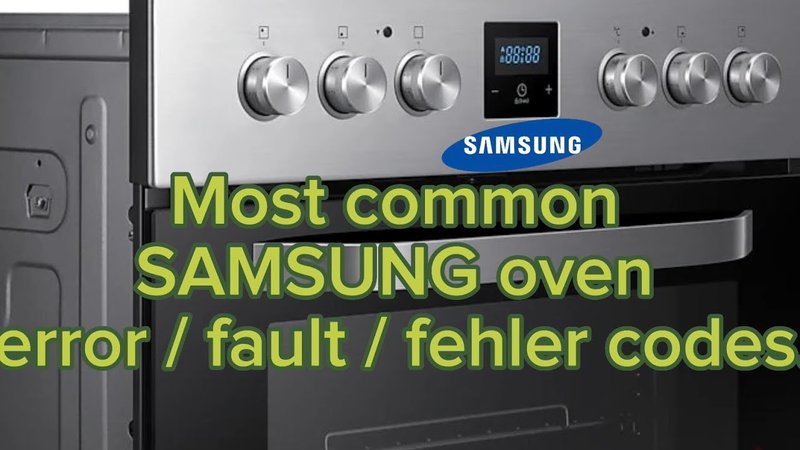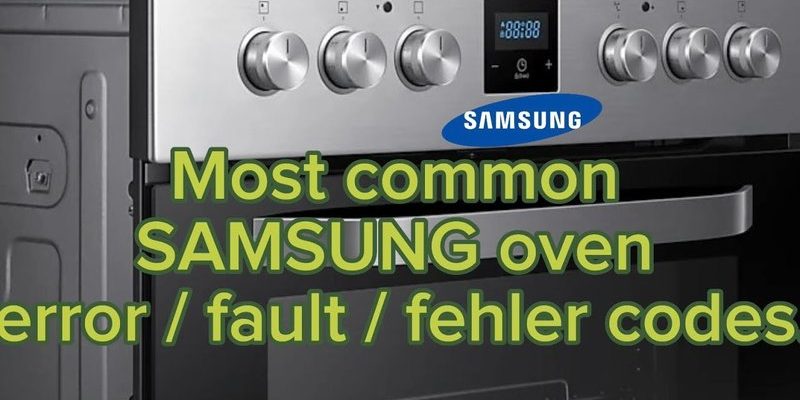
This error code is Samsung’s way of telling you something’s not quite right with your oven’s temperature sensor. Think of it like a car’s check engine light, giving you a heads up that it needs some attention. But don’t panic! You don’t need to be a tech wizard to figure this out. With a little bit of patience and some guidance, you can get to the bottom of it and be back to baking those cookies in no time. Let’s dive in and unravel this mystery.
Understanding Error Code F2
First up, it’s important to understand what exactly this error code is signaling. When you see F2 on your oven’s display, it generally indicates that the temperature inside the oven is either too high or the temperature sensor is faulty. Imagine your oven as a tightly-knit team where every component needs to work perfectly in sync for your culinary creations to turn out just right. If the sensor, which acts like the team’s goalie, isn’t doing its job of monitoring and managing the temperature effectively, things go awry.
How does this happen? Well, over time, the temperature sensor can get worn out or dirty, much like how your favorite pair of sneakers might start looking a bit run down. This sensor is crucial because it sends accurate temperature readings to the control board, allowing the oven to maintain the temperature you’ve set. But when it’s not functioning properly, it’s like having a faulty thermostat in your house—it just can’t keep things steady.
Another thing to note is that sometimes, the error might not be with the sensor itself but with the control board. The control board is basically the brain of your oven, controlling all its functions. If the brain isn’t reading the signals from the sensor correctly, it might misinterpret the temperatures, sending your oven into frenzy mode. It’s like having a GPS that’s not receiving satellite signals properly. Miscommunication leads to wrong directions and, eventually, getting lost.
Causes of Error Code F2
Alright, let’s talk about what can cause these issues. One common culprit is a malfunctioning temperature sensor, which as mentioned, is responsible for sending temperature data to the oven’s control board. Over time, heat and constant use can cause wear and tear. Much like how frequent exercise can lead to sore muscles if not properly cared for, sensors can degrade, leading to inaccurate readings.
Next up is the wiring connecting the sensor to the control board. Imagine these wires as telephone lines. If there’s a cut or a breach somewhere, the messages from the sensor can’t reach the control board, leading to mixed signals. Corrosion or damage caused by rodents (yes, it happens!) or even just age can cause these wires to malfunction.
Sometimes, the problem might reside with the control board itself. This board can be compared to the conductor of an orchestra. If it isn’t interpreting the signals correctly or fails to issue commands based on them, chaos ensues. Power surges or old age can damage these boards, causing them to malfunction.
Steps to Fix Error Code F2
So what’s next? Fixing this issue can frequently be a DIY affair. Start by checking the temperature sensor. You can do this by accessing it from the back of the oven. Once you’ve located it, inspect for any noticeable damage or dirt. If it looks a bit worse for wear, you might need to replace it. Replacement sensors are available online, and installing a new one can often solve your problem in a jiffy.
If the sensor seems fine, take a look at the wiring. Make sure there’re no breaks or signs of corrosion. If you find any issues, it might involve some rewiring or soldering, which could be a bit tricky if you’re not comfortable with electronics. In such cases, calling in a professional might be your best bet—like having a specialist tune your piano rather than risking off-key notes.
When the above steps don’t yield results, the control board might be the faulty component. Now, replacing a control board can be more technical and costly. If you’re not sure about this step, consulting a professional technician is wise. They can test the board and provide a clear diagnosis, ensuring that you don’t replace the wrong part and spend more than necessary.
Preventing Future Issues
Nothing beats preventative care, right? Just like you’d maintain a car to avoid breakdowns, regular checks and maintenance can keep your oven in top shape. Every once in a while, clean the oven thoroughly. Ensure that the temperature sensor is kept clean and free from residue buildup, which can affect its sensitivity.
Also, keep an eye on how your oven behaves. Small signs like fluctuating heat or longer cooking times might indicate impending issues. Listening to these signs early could prevent a full-blown error code from appearing at the worst possible time.
In essence, while the F2 error code can be a hassle, it doesn’t need to spell trouble. With a little understanding and regular maintenance, your Samsung oven or range can continue to serve up delightful dishes without a hitch. So next time you get a heads up from your oven, you’ll know exactly what to do. Happy cooking!
